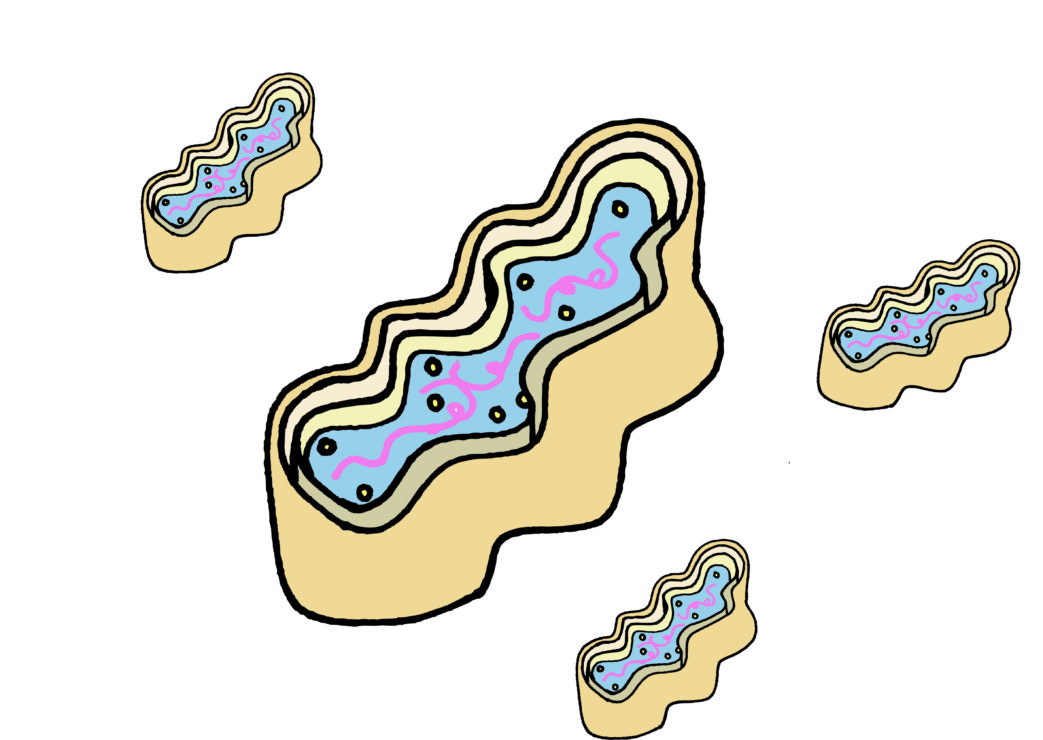A recent study led by UVic researchers Lisa Kalynchuk and Hector Caruncho has found a potential correlation between the production of a brain protein named reelin and depressive symptoms in humans.
Kalynchuk, Associate Vice-President of Research at UVic, and Caruncho, a neuroscientist based in UVic’s division of Medical Science, were co-authors on a peer-review paper titled ‘Mitochondria and Mood: Mitochondrial Dysfunction as a Key Player in the Manifestation of Depression’ that explained an intriguing link between mitochondrial disease and depression.
“For a long time we didn’t know very much about the neurobiology of depression, and that’s partly because we didn’t have tools for studying it,” said Kalynchuk. “So, much of what we knew about the neurobiology of depression came from understanding what antidepressant drugs do, so if you can’t study the disease, well then figure out what the drug does and the opposite of what the drug does should be the cause.”
Kalynchuk and her team decided to look beyond the old scientific belief that an imbalance of the neurotransmitters serotonin and epinephrine cause depression. Instead, they focused their attention on developing models that measured mitochondrial production — specifically the matrix protein reelin — through manufactured depression in animals.
“So that really has really opened up new doors, because that’s totally a novel mechanism that no one has looked at before.”
The mitochondria is the main energy factory of the cell, and the brain relies on it for its energy use and ability to store large amounts of glycogen in its energy reserves, the paper writes. So, when mitochondrial dysfunction occurs — triggered by a slowing of reelin production — not enough energy is sent to the brain and could cause depressive symptoms.
“There seems to be a very close association with the decrease in reelin and the onset of depressive symptoms. So that really has really opened up new doors, because that’s totally a novel mechanism that no one has looked at before — people have spent so much time focusing on serotonin and epiffnefrim, and other molecules in the brain,” said Kalynchuk, explaining that the protein reelin holds a unique position in biology.
“Reelin is a very different. It’s a large protein that sits outside cells, and it really provides a scaffold that helps cells connect with other cells and facilitates communication.”
In the study, the researchers used lab rats as subjects to observe changes of reelin in their brain. The duo injected stress hormones into some of the rats, and watched to see if that experimental group displayed depressive symptoms that differed from the rats not given stress injections.
“The credit goes to the students for the hard work they put into this, and their passion and dedication to these experiments,” said Kalynchuk.
“More than 10 years ago, my group and some other researchers started developing good tools to studying depression in animal models,” said Kalynchuk. “So, if you create symptoms, what does that look like? Well, the animals will be lethargic, they won’t show interest in things they used to like to do, they’re not very active, they show helpless behaviour.”
One of the ways the team measures those depressive symptoms in rats is with a forced swim test.
In the experiment, the researchers filled a 60-centimetre cylinder with water and dropped the stress-injected rats and regular rodents in the water to measure their ‘immobility behaviour’ — a form of learned helplessness.
There was quite a discrepancy between the normal rats that fought and swam to stay afloat and the depressed rats that simply did enough to barely stay above the water.
Kalynchuk and Caruncho said the normal rats would swim around for the whole five or ten minutes they left them in the water, while the stressed rats would give up in one or two minutes, and just move their paws enough to keep their snouts above the water.
It’s only been a little over 20 years since reelin was discovered in the human brain, but with the recent findings of its potential link to depressive symptoms, Kalynchuk and her team are eager to help develop future antidepressants for the over 300 million people that battle the disease worldwide.
The team was comprised of numerous students in the lab, including doctoral student Josh Allen and post-doctorate Raquel Romay-Tallon, whom Kalynchuk and Caruncho were quick to credit for the majority of the team’s discoveries.
“The credit goes to the students for the hard work they put into this, and their passion and dedication to these experiments,” said Kalynchuk.
The researchers say the idea of mitochondria and reelin production is a new one, and right now they don’t have any specific data of the involvement of mitochondria in depression. But, the team will continue to conduct studies and experiments over the summer, in hopes of one day finding novel mechanisms for depression treatments.









